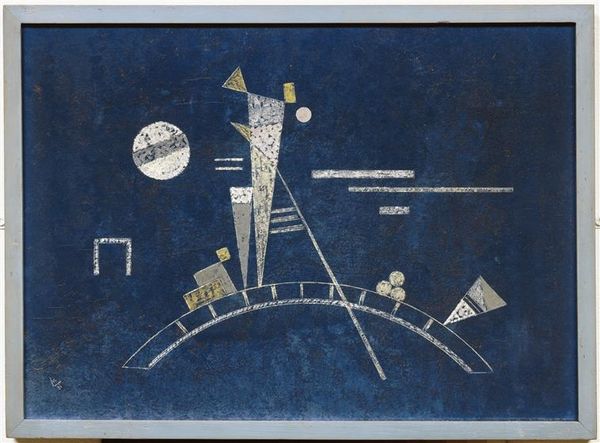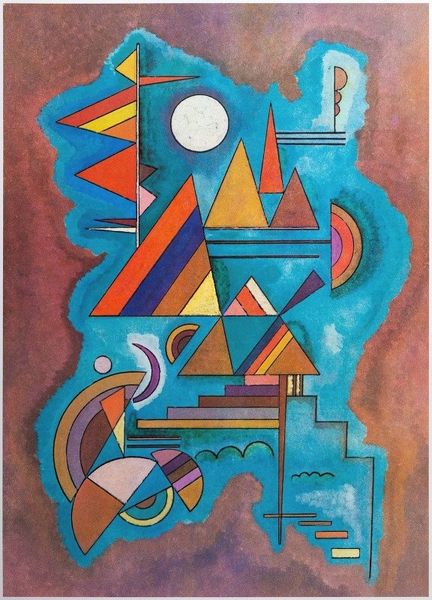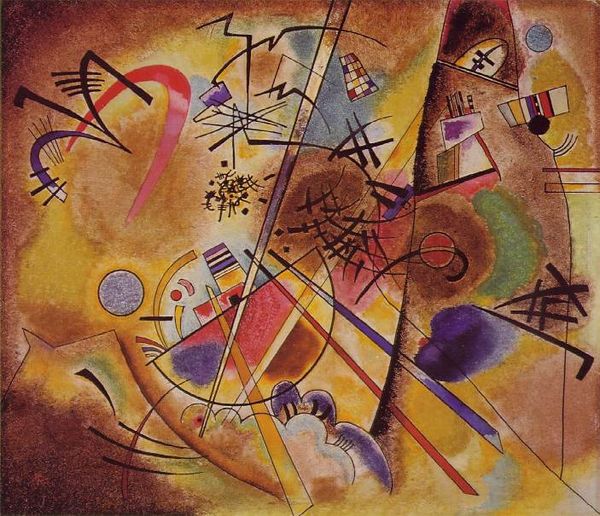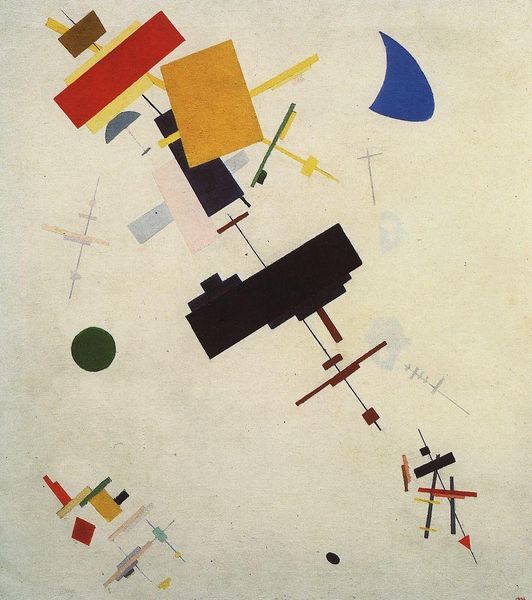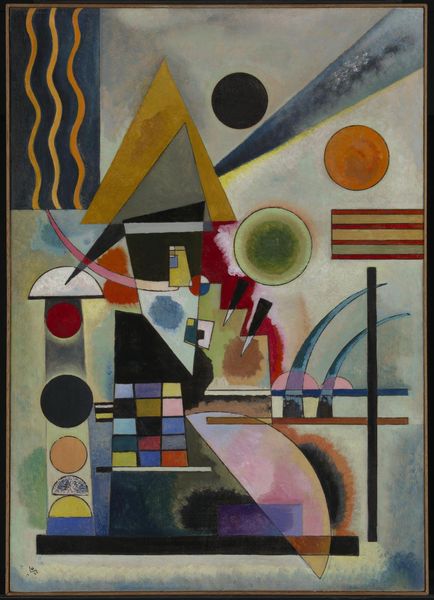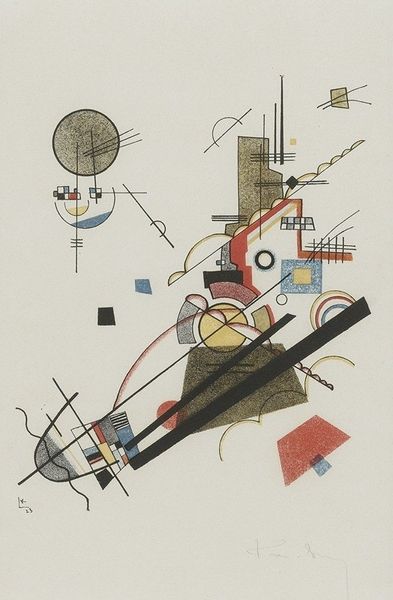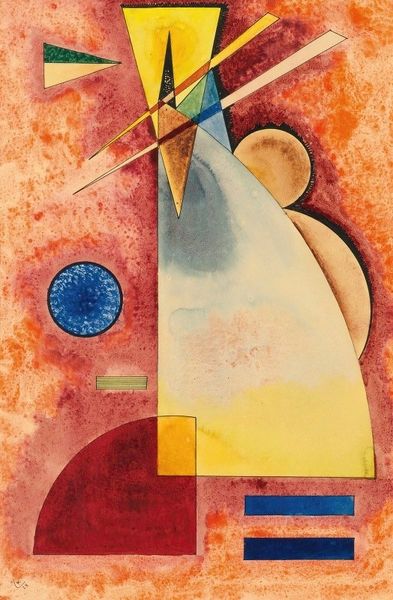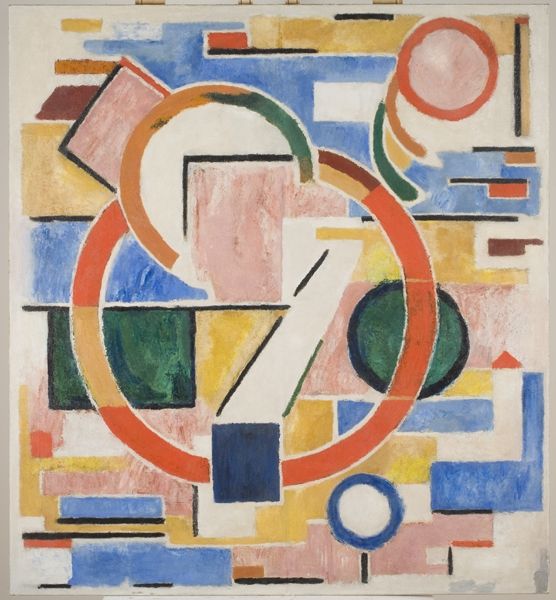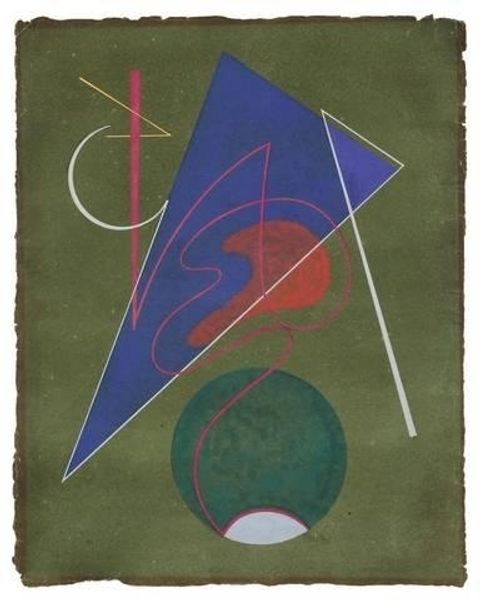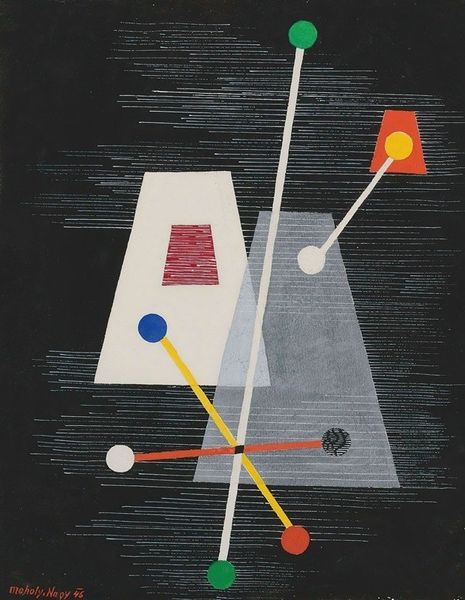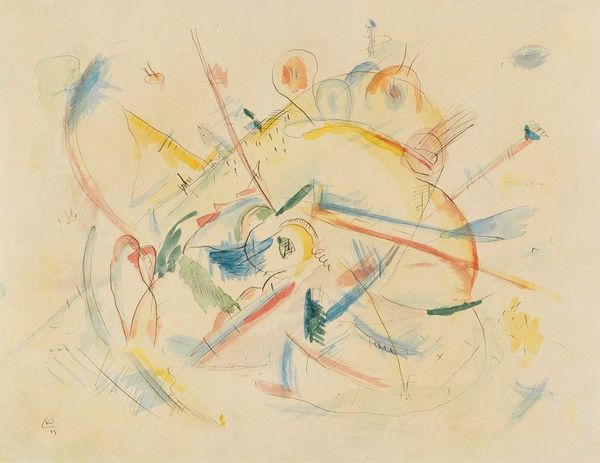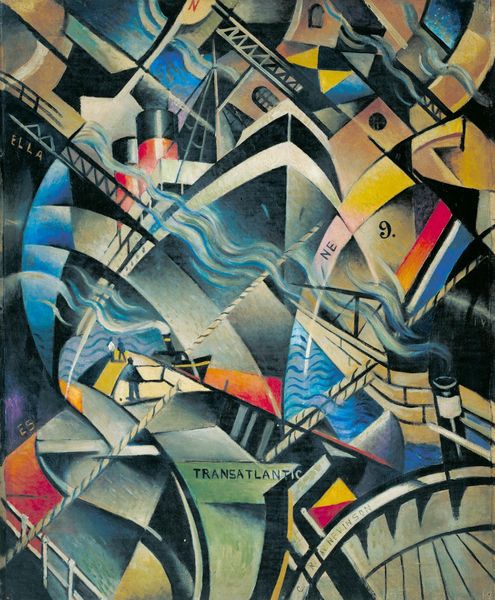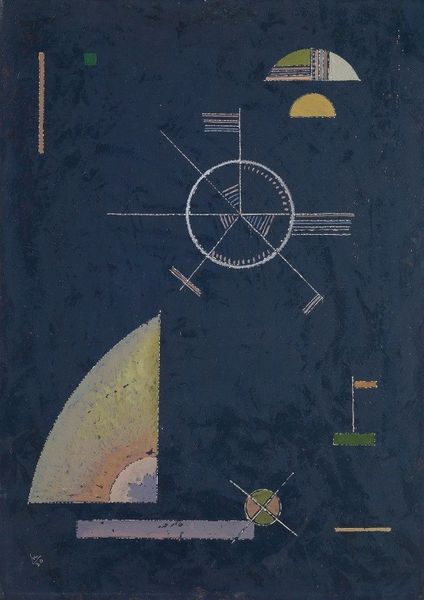
Dimensions: 19.7 x 26.1 cm
Copyright: Public domain
Curator: This watercolor on paper is titled "Dark Freshness," painted by Wassily Kandinsky in 1927. It's currently held at the Georges Pompidou Center in Paris. What are your first impressions? Editor: Stark. The geometric shapes leap off that deep blue, almost oppressive, background. The contrast is startling. It feels more like an urban landscape, disrupted or maybe even under construction, than something "fresh". Curator: Kandinsky was deeply influenced by Theosophy and believed that color and form could evoke specific emotions and spiritual experiences. His move toward non-objective art was quite revolutionary, aiming to detach art from direct representation of the material world, and focus instead on the artwork's inherent ability to communicate to a viewer's "inner self". This also places his art in a historical context—did you know his work was actually deemed degenerate art during the Nazi regime? Editor: Right, and the suppression of avant-garde movements speaks volumes about the socio-political environment of the time and the institutions that controlled and censored artistic expression. This abstract language then became a means of resistance to those established structures. Do you think the title here acts as a challenge to expectations? "Dark Freshness," those words sit in stark opposition. Curator: Absolutely. I read the 'darkness' as being the intensity of the color and the intersecting lines, creating a sense of unease, while the "freshness" comes from Kandinsky's innovative use of form and color. Also notice the dots in the background that maybe softens the harder shapes and colours. Editor: It makes me think about societal perceptions of beauty, of innovation. I think Kandinsky invites us to challenge those perceptions. Abstraction was very closely associated with power. What’s being displayed? Who’s seeing it? Curator: True, abstract works like this forced a reassessment of value, inviting the audience to engage critically rather than passively accept prescribed ideals. "Dark Freshness" wasn't just aesthetically bold; it was a radical statement. Editor: Looking at it now, understanding its context, makes it more, well…fresh. Curator: Agreed. It seems so modern, still able to challenge us to consider where power and meaning lie in the presentation of the modern world.
Comments
No comments
Be the first to comment and join the conversation on the ultimate creative platform.
